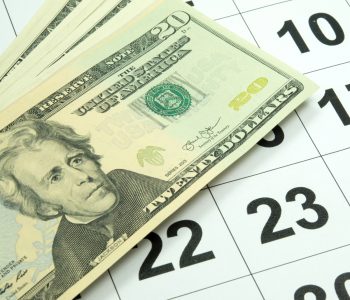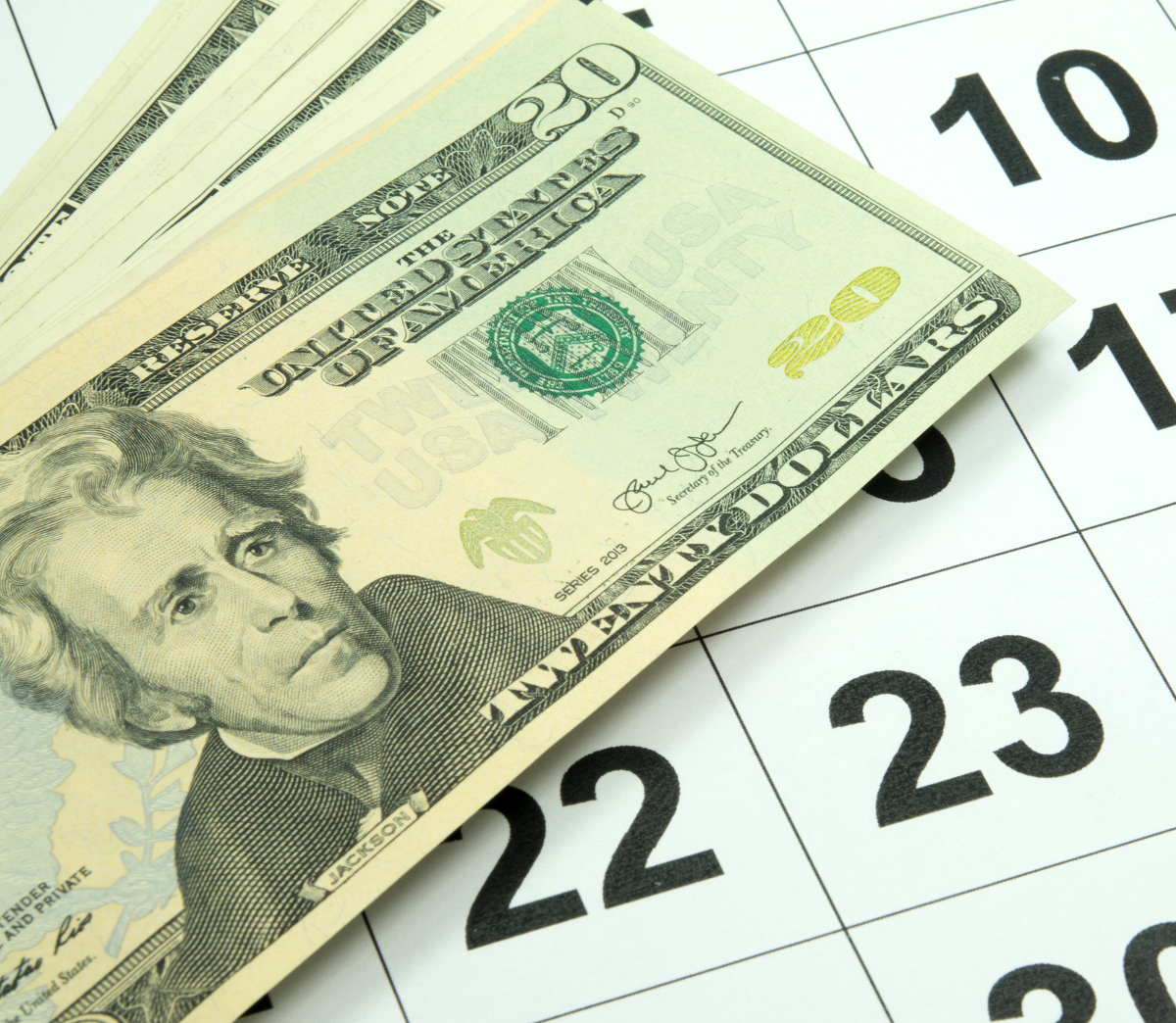5 Best ETFs That Pay a Monthly Dividend

Monthly Dividend ETFs for 2017
Have you ever tried looking for investments that offer a monthly dividend payment and diversification at the same time? With so many investments available today, doing so is certainly no easy feat.
However, one investment product meets both these needs: exchange-traded funds (ETFs). I will go through how owning an ETF would benefit you and your portfolio. Below is also a list of the best monthly dividend ETFs for 2017, some of which could earn you more than seven percent annually.
3 Reasons to Consider a Dividend-Paying ETF for Your Portfolio
An ETF could save you a lot of money when researching companies that you want exposure to. You also benefit from not having to pay a commission fee to your broker. Here are three of the greater benefits of dividend-paying ETFs.
1. Diversification
No matter what the sector, market cap size, or index, you can most likely find an ETF. Let’s say you wanted a means into the S&P 500 Index because it contains the largest, best-known companies in the United States. Now, you could go out and buy all 500 companies, which would take quite a bit of time and money, due to commission. Or instead, you could buy a single ETF that tracks the index. Purchasing an ETF gives you all the upside to the companies within an index.
Another benefit over individual stock buying is that it reduces the time needed to rebalance a portfolio. For instance, if one or more stocks become a very large part of your portfolio, you may then proceed to trim your position to lower your overall risk. But, with the 500 stocks from the S&P 500 in the portfolio, this could be very difficult to complete in a short period and would, again, incur more commission costs. But, with an ETF, you’re buying and managing all 500 at once.
Studies have shown that diversification is a key indicator of positive investment returns. This is because, if one stock is underperforming, a diversified portfolio means you can also have one that is performing better to balance it out. ETFs also mean less guessing about the future directions of investments.
2. Steady Dividend Payment
Let’s say you had a very big position in one stock that pays out a dividend. You are relying heavily on this dividend to pay for your expenses so, if the dividend were to be cut or eliminated one day, you’d be in major trouble. However, there is no need to take such a large amount of risk to pay for your expenses. This is why a dividend ETF should be considered for its steady income nature.
Since an ETF is a diversified portfolio of stocks within the investment, they provide great value to investors. The value comes from the steadiness of the dividend payment to holders of the ETF.
Using the prior example of the S&P 500, if one of those companies reduces or removes its dividend, there is no real impact to holders of the ETF, since the remaining 499 companies would pick up the slack. And, if the cut occurred as another company increased its dividend, this would offset any lost income.
3. Tax Benefits
Investing in dividend ETFs has two major tax benefits. First, taxes are deferred based on receiving a return on capital and a stock dividend. The dividend is one whole payment, but is broken down into a qualified or non-qualified dividend payment, an interest payment, and the return on capital. For instance, a payment of $1.00 per share would be received, and this would be split into the dividend payment ($0.60), interest payment ($0.10), and return on capital ($0.30). No taxes are accounted for on the return of capital until the shares are sold.
The second major tax benefit occurs when the dividend is used to purchase more shares of the ETF. Instead of receiving a cash payment, the dividend is used to purchase more shares of the ETF, increasing the overall position. The shares would be received as a stock dividend.
Investors will also be able to control they would like to incur the tax liability, and control is always a good thing.
Monthly Dividend ETF List
| ETF Name | ETF Symbol | Price | Dividend Yield |
| WisdomTree Strategic Corporate Bond Fund | CRDT | $75.01 | 3.85% |
| Horizons S&P 500 Covered Call ETF | HSPX | $47.85 | 3.21% |
| PowerShares KBW Premium Yield Equity REIT Portfolio | KBWY | $36.85 | 7.56% |
| SPDR Dow Jones Industrial Average ETF | DIA | $209.48 | 2.26% |
| PowerShares Preferred portfolio ETF | PGX | $15.04 | 6.11% |
1. WisdomTree Strategic Corporate Bond Fund
WisdomTree Strategic Corporate Bond Fund (NASDAQ:CRDT), also known as WisdomTree Trust, generates both income and capital gain returns. At least 80% of its assets are invested in corporate debt and include bonds, notes and money market securities. The rest of the portfolio is debt investments that are linked to the rate of inflation of local economies, variable rate securities, and both U.S. and non-U.S. corporate issuers. The investments are made into maturities between two and 10 years.
The purpose of this investment vehicle is to invest in bonds and other debt instruments. Investors lend money to the companies and, in return, receive income and the capital investment at its maturity date.
The reason why WisdomTree is one of the best monthly dividend ETF stocks is its global diversification. Approximately 55% of the fund’s assets are invested in the U.S., and rest globally. This provides a return based on the income and capital gain. The global part of the portfolio can benefit from a foreign exchange gain as well.
2. Horizons S&P 500 Covered Call ETF
Horizons S&P 500 Covered Call ETF (NYSEARCA:HSPX) seeks to replicate the S&P 500 Stock Covered Call Index. A minimum of 80% of its assets are invested in securities within the index, with similar weights. Income is obtained either via the dividend or by using an option strategy.
The option strategy is owning the underlying stock and then using a covered call strategy for income. This is used when the stock is expected to generate a flat price movement over a certain time period. Sometimes this strategy generates a higher short-term return than what would be received from a dividend yield over one year.
For the securities that do not pay a dividend, there is simply an option strategy used to generate an income. This applies to companies such as Alphabet Inc (NASDAQ:GOOG), Facebook Inc (NASDAQ:FB) and Amazon.com, Inc. (NASDAQ:AMZN).
Securities that serve as an income source by simply owning them include Apple Inc. (NASDAQ:AAPL), JPMorgan Chase & Co. (NYSE:JPM), and Johnson & Johnson (NYSE:JNJ). However, even though a dividend is received, there is still an option strategy available if you wish to attempt to earn an additional source of income.
3. PowerShares KBW Premium Yield Equity REIT Portfolio
PowerShares KBW Premium Yield Equity REIT Portfolio (NASDAQ:KBWY), also known as PowerShares Exchange-Traded Fund Trust II, attempts to replicate the price and yield reflected by the KBW NASDAQ Premium Yield Equity REIT Index. This index contains small- and mid-cap real estate investment trusts (REITs) based in the United States. KBWY’s holdings are also held in the same proportion as the underlying index, meaning they hold similar levels of risk.
KBWY is the highest-paying monthly dividend ETF on this list because REITs generate a lot of cash flow on a consistent basis. They also receive a tax benefit based on how the company is structured, which benefits investors since 90% of cash flow must be paid out to them.
There are 30 holdings within the REIT portfolio, and no position accounts for more than 12% of the total capital of the ETF.
Some of the companies operate senior home living communities, rent office buildings to the U.S. government, and serve as real estate developers. This means you would be investing into real estate without all the running around required of a traditional landlord.
Also Read:
5 Top Financial ETFs to Watch in 2017
7 Best Dividend Growth ETFs for 2017
4. SPDR Dow Jones Industrial Average ETF
SPDR Dow Jones Industrial Average ETF’s (NYSEARCA:DIA) main objective is to provide a similar price movement and yield as the Dow Jones Industrial Average (DJIA). Each stock within the index is represented in the same percentage as the underlying index.
As mentioned above, owning a dividend ETF has the benefit of diversification and, with 30 different companies, this ETF is no different. The top three sectors represented in DIA are consumer defensive, technology, and industrial sector, which accounts for approximately 60% of the total capital invested.
The top holdings that provide consistent dividends are Home Depot Inc (NYSE:HD), Microsoft Corporation (NASDAQ:MSFT), and Wal-Mart Stores Inc (NYSE:WMT). These are examples of reliable income sources because of their predictable revenue and global presence, making DIA one of the best ETFs for monthly income.
5. PowerShares Preferred Portfolio ETF
PowerShares Preferred Portfolio ETF (NYSEARCA:PGX) tracks the price movement and yield of the BofA Merrill Lynch Core Plus Fixed Rate Preferred Securities Index. At least 80% of PGX’s assets are invested in fixed-rate U.S. dollar-denominated preferred securities that make up the underlying index. The ETF is rebalanced on a monthly basis to ensure that the investments don’t become a large portion of the overall invested capital, reducing risk.
The preferred shares are investment-grade bonds, which are considered lower-risk and have a higher probability of receiving a steady stream of income. About three quarters of the total capital is invested in preferred shares, the remaining going into U.S.-based stocks and cash investments.
PGX is well diversified among many different sectors, with the top three sectors—financial services, utilities, and communications—representing approximately 22% of the total capital invested.
At 6.11%, PGX is a high-yield dividend ETF. The dividend is paid out every month, hence it has a place on any monthly dividend ETF list.














